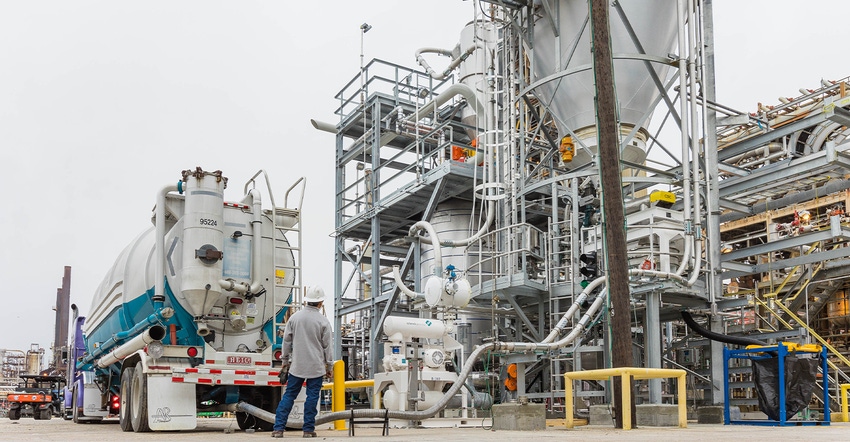Who Taps Into Chemical Recycling and For What Applications?
When you hear the industry buzz words, “chemical recycling”, do you think of technology that converts single-use plastic trash to products? The connection would make sense; chemical recycling, which typically uses heat to break down polymers into their building blocks, is touted as able to turn fast-swelling heaps of wasted plastic packaging back into more packaging. But spent plastics of all kinds are going back into new products—from clothing, carpet, synthetic turf, syringes and needles, to name a few.

When you hear the industry buzz words, “chemical recycling”, do you think of technology that converts single-use plastic trash to products? The connection would make sense; chemical recycling, which typically uses heat to break down polymers into their building blocks, is touted as able to turn fast-swelling heaps of wasted plastic packaging back into more packaging. But spent plastics of all kinds are going back into new products—from clothing, carpet, synthetic turf, syringes and needles, to name a few.
Among manufacturing giants buying into advanced recycling is Mercedes-Benz. The German luxury automotive brand builds vehicles with parts made from pyrolysis oil from scrap tires and biomethane from agricultural waste and food residues. Black & Decker sells power tools with housing incorporating waste materials. And AstroTurf taps into chemical recycling to divert spent products from landfill, back to its plants to make more turf.
The technology developers say it can handle more and different hard-to-recycle plastics and deal with one of traditional recycling’s sharpest thorns: contamination.
“Advanced recycling [as the technologies’ advocates call it] enables us to turn more plastics into a wide variety of new products—including highly regulated applications such as food-grade packaging and medical equipment—instead of landfilling them,” says Craig Cookson, senior director, Plastics Sustainability, American Chemistry Council.
Because it takes used material back to its molecular building blocks, the feedstock is indistinguishable from virgin feedstock, so it can be used in any plastics application, he says. While not as common, it can make circular products from some non-plastic wastes.
Some materials specialty companies who long relied solely on mechanical recycling see this additional approach, which most commonly relies on gasification or pyrolysis, as a door opener.
“Mechanical recycling works very well with well-sorted and well-defined waste streams. When you have mixed waste plastics that cannot be easily sorted, chemical recycling is the way to go,” says Susan Jackson, head of Communications & Sustainability for BASF’s performance materials business in North America.
BASF, one of the largest chemical producers in the world, is the enterprise making parts from recycled materials for Mercedes-Benz; one of several of its automotive customers. It also manufactures products for the furniture and textiles industries, among others.
Besides working with a range of polymers, BASF finds use for some non-plastic waste, specifically a stream generated during electronics production that goes into stools for furniture manufacturer Steelcase. The material, which was previously incinerator-bound, is a one-for-one drop-in replacement for fossil-derived plastics.
Chemical recycling is gaining traction among food, pharmaceutical, and medical sectors—huge waste generators pressed to stand up to rigorous hygiene and safety standards.
U.S. healthcare facilities alone reportedly crank out 14,000 tons of waste a day. About a quarter of it is plastic, and almost all of it heads to landfill or incinerators. Medical technology company Becton, Dickinson (BD) is among the first in its industry to take a hard look at chemical recycling, recently completing a trial with Casella to see how the process fares with medical waste in red sharps containers. The pilot is now expanding to other regions and will test recycling approaches on more medical materials.
Specialized products often require specialized handling. Medical streams may need to be sterilized and preprocessed. Auto lubricant bottles have residual oil that needs to be dealt with. The fiber in synthetic turf must be separated from backing and prepared for transport, says Bill Cooper, senior vice president, Corporate Strategy and Development, Cyclyx. The plastic feedstock management company works with these streams and others, supporting resin producers the likes of Dow, Chevron Phillips, INEOS Styrolution, Braskem, NOVA Chemicals, and TotalEnergies.
While there’s often front-end work involved to prepare material, it doesn’t have to be sorted by plastic type to create consistent pellets. Cooper says it can be bundled, at least if its chemical composition is known.
Understanding each plastic’s chemical profile is key to identifying the most fitting process for a given stream, he says.
“So, we look at plastics from a chemical fingerprint standpoint. What is the chemical composition of a waste plastic stream? What are elements of concern in fillers, dyes, residual contamination, and oxygen barriers in multilayer films? These are some constituents in plastics that do not get registered if you just look at polymer type.”
Analyzing and managing streams based on their chemical profile enables processors to sort out problematic products, combine compatible streams, and ultimately ensure feedstock meets customers’ specs.
Textile recycler Circ uses a hydrothermal chemical process to break down polycotton blends, recovering both the polyester and cotton to make new garments—and tackling a persistent problem. Forty million tons of polyester and cotton blends are produced every year, with a large share quickly discarded, making these two fabric types the textile industry’s largest waste streams.
“Textiles have been difficult to recycle due to the use of blends. Separating them has historically been very difficult but is critical in order to eliminate all the waste from textiles,” says Teresa Krug, senior vice president of Innovation at Circ.
Circ breaks down the polyester in a way that is gentle enough to preserve the cotton’s cellulose and recover the polyester to bring old clothes back to life.
“We’re working with brands across the globe, from luxury to mass market, to introduce fibers made from recycled textile waste into their supply chain,” Krug says.
There’s still vetting to do to determine the true potential impact of chemical recycling.
For now, BASF, like others in this space who believe in its possibilities, say they have their work cut out for them, and not just as technical gurus, but as educators. How the technology might work is still fairly new to industries starting to pay attention to it.
��“We are working to help our customers understand chemical recycling. What it is. How it can be used. How it supports a circular economy,” Jackson says.
About the Author(s)
You May Also Like




